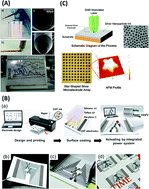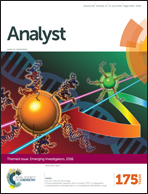Deposition, patterning, and utility of conductive materials for the rapid prototyping of chemical and bioanalytical devices
Abstract
Rapid prototyping is a critical step in the product development cycle of miniaturized chemical and bioanalytical devices, often categorized as lab-on-a-chip devices, biosensors, and micro-total analysis systems. While high throughput manufacturing methods are often preferred for large-volume production, rapid prototyping is necessary for demonstrating and predicting the performance of a device and performing field testing and validation before translating a product from research and development to large volume production. Choosing a specific rapid prototyping method involves considering device design requirements in terms of minimum feature sizes, mechanical stability, thermal and chemical resistance, and optical and electrical properties. A rapid prototyping method is then selected by making engineering trade-off decisions between the suitability of the method in meeting the design specifications and manufacturing metrics such as speed, cost, precision, and potential for scale up. In this review article, we review four categories of rapid prototyping methods that are applicable to developing miniaturized bioanalytical devices, single step, mask and deposit, mask and etch, and mask-free assembly, and we will focus on the trade-offs that need to be made when selecting a particular rapid prototyping method. The focus of the review article will be on the development of systems having a specific arrangement of conductive or semiconductive materials.

- This article is part of the themed collection: Emerging Investigators

 Please wait while we load your content...
Please wait while we load your content...